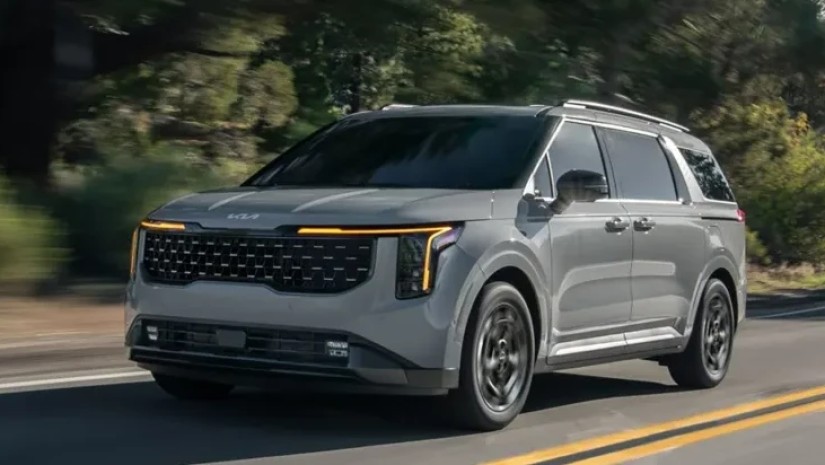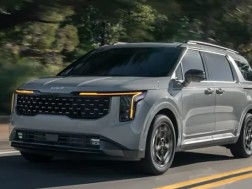Kia Motors is adding a hybrid model to its Carnival minivan to meet increasing consumer demand for the technology and assist in meeting tightening federal fuel economy standards.
Hybrids are a growing option for automakers as they strive to make vehicles more efficient and avoid costly federal fuel economy and emissions standards. They’re also less expensive and a less dramatic adjustment for consumers who want to go greener but aren’t ready to purchase all-electric vehicles.
EV sales have been slower than planned in the U.S. auto industry, though they’re expected to grow.
Hybrid vehicles typically include a traditional internal combustion engine combined with EV technologies such as an electric motor and small battery. They function like traditional vehicles and do not need to be plugged in like EVs or plug-in hybrid electric vehicles.
Kia America Vice President of Marketing Russell Wager told CNBC that adding the hybrid option for the Carnival was about giving customers choices. The South Korean automaker aims to have electrified models across its lineup.
“It’s just going to add a whole extra audience, because we didn’t have a hybrid,” Wager told CNBC.
The Carnival hybrid, announced at the Chicago Auto Show, is expected to go on sale alongside an updated version of the traditional minivan in the summer. Both models feature updated styling and interior technologies compared with the current model, which made waves in the family hauler segment for its SUV-inspired design when it was introduced in 2021.
Kia did not release pricing or fuel economy expectations for the new models. The current Carnival starts from about $33,000 to $47,000. With a 3.5-liter V6 engine, it achieves up to 20.6 miles per gallon combined city/highway, with a total range of 418 miles.
That V6 engine will continue to be offered alongside the 1.6-liter four-cylinder turbo-hybrid engine that produces 242 horsepower and 271 foot-pounds of torque, according to Kia.
Kia expects the hybrid model to account for half of the Carnival’s sales, according to the company.
It will be Kia’s fourth hybrid. The automaker also offers three plug-in hybrid electric vehicles.
Aside from the hybrid option, the updated minivan includes a redesigned front and back, including new lights and a larger, more open grille on the front of the vehicle. The updated interior includes Kia’s new infotainment system and other newer tech. It continues to offer “VIP lounge seating” with power controls and leg extensions, much like a traditional reclining chair.
While the U.S. minivan segment is a far cry from its peak of roughly 1.5 million vehicles in the mid-1990s, some auto companies such as Hyundai and Chrysler remain in the category.
Kia parent Hyundai, which sold fewer than 44,000 Carnivals last year, achieved 14% market share of the roughly 305,500-unit minivan market last year in the U.S., according to auto data firm Motor Intelligence.
Chrysler was the segment leader last year with sales of its Pacifica minivan, including a plug-in hybrid electric version, at more than 120,550 units, or roughly 40% market share.
“We don’t like being where we are ranked in our market share,” Wager said. “We think we can compete with any of the others in the segment.”
Wager said the Carnival, which is imported from South Korea, is capacity constrained, meaning Kia could sell more in the U.S. if they could import more of the vehicles.
He said the company is increasing production capacity of the Carnival for the U.S.
The added capacity as well as additional production of other Kia models should assist the automaker in topping its record U.S. sales of 782,451 vehicles last year.
“Our goal is to sell more than we sold for last year’s record sales,” Wager said.
Source: CNBC














